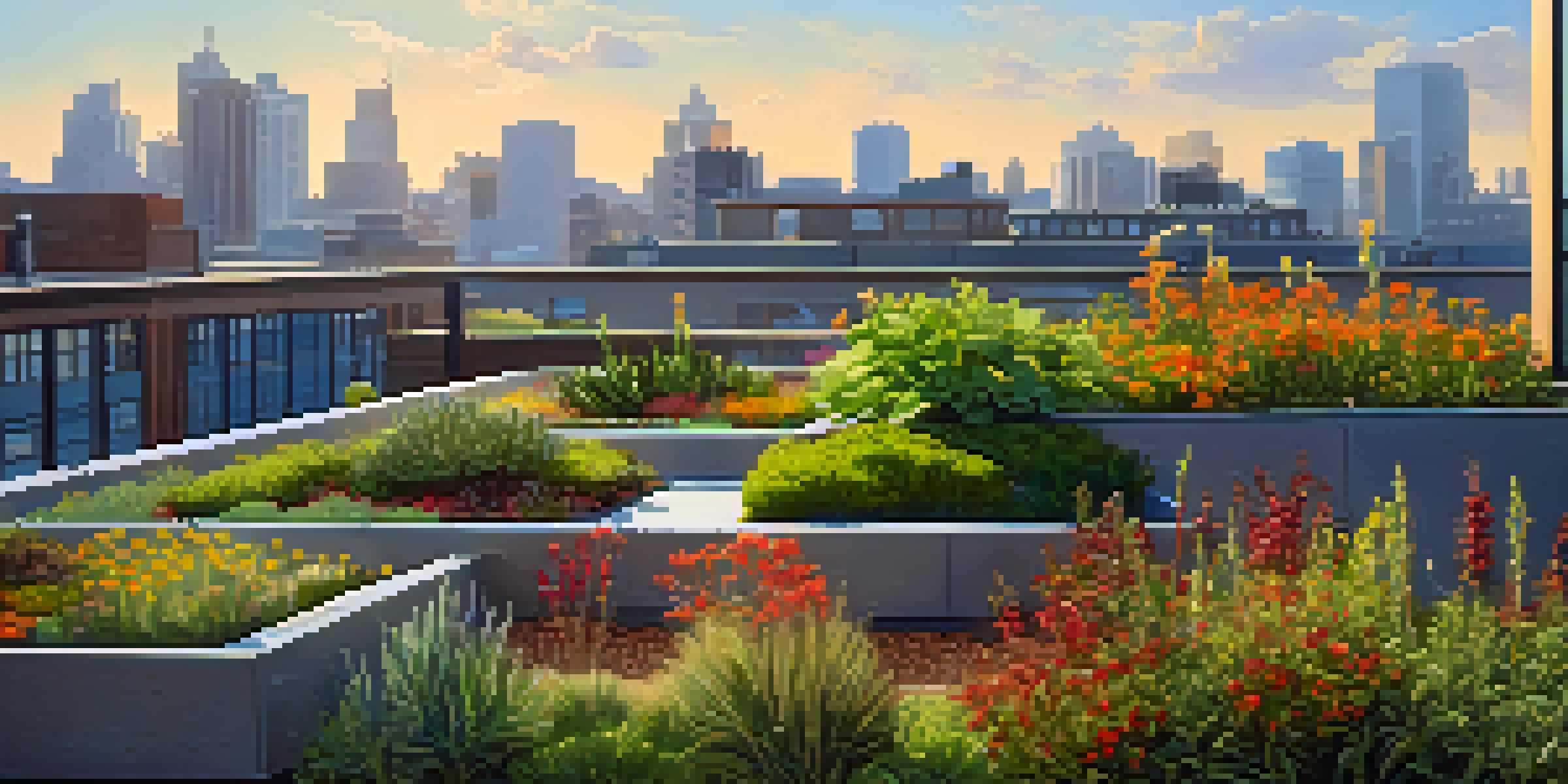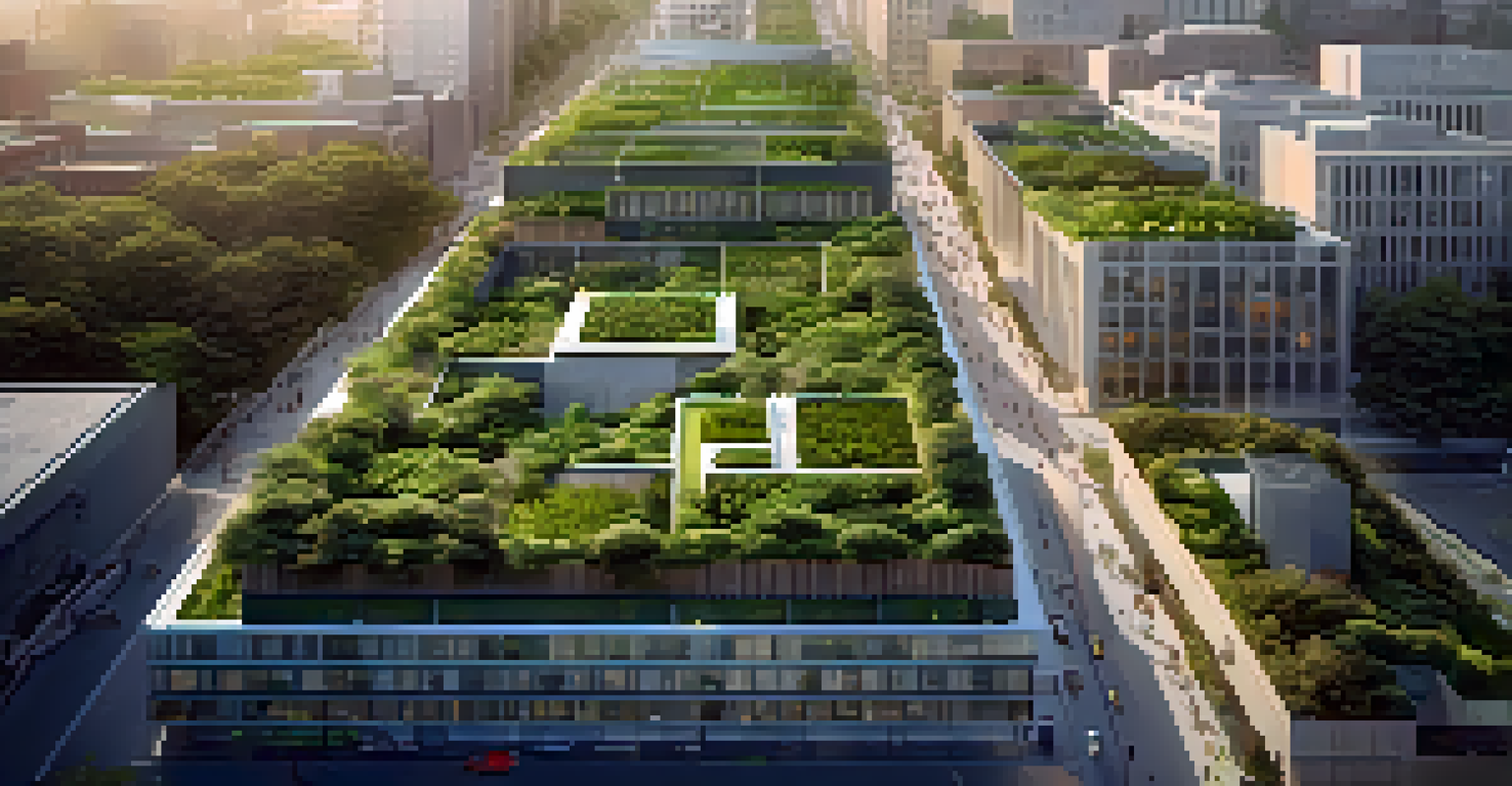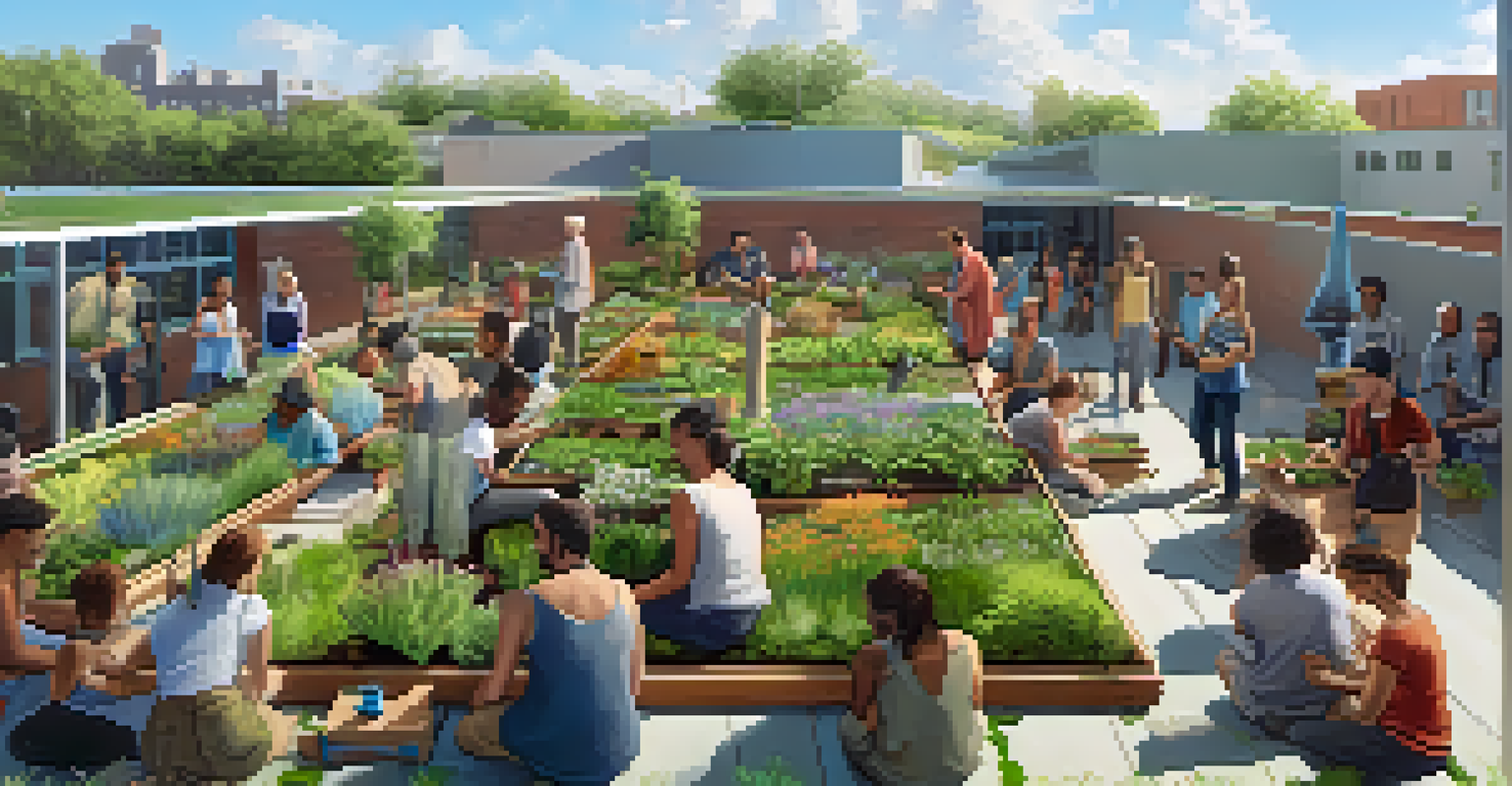Green Roofs and Their Contribution to Urban Biodiversity

What Are Green Roofs and Why Do They Matter?
Green roofs are layers of vegetation planted on the rooftops of buildings. They not only provide aesthetic benefits but also play a crucial role in urban ecosystems. As cities grow and natural habitats shrink, green roofs emerge as vital spaces for both flora and fauna.
The greening of the urban landscape is essential for the health of all species, including humans.
These roofs can be categorized into extensive and intensive varieties; extensive roofs support low-growing plants, while intensive roofs can accommodate a wider array of plants, including shrubs and even small trees. This diversity makes them attractive habitats for various species.
By integrating green roofs into urban planning, cities can combat the loss of biodiversity, improve air quality, and manage stormwater, creating a healthier environment for residents and wildlife alike.
The Role of Green Roofs in Supporting Wildlife
Green roofs serve as crucial habitats for birds, insects, and other wildlife. For example, many bird species use these urban oases for nesting and feeding, making green roofs important for maintaining avian populations in cities. Pollinators like bees and butterflies also thrive in these lush environments.

Insects that inhabit green roofs contribute to pollination and the overall health of urban ecosystems, helping to sustain plant diversity. This is particularly important as urban areas often face challenges in supporting wildlife due to habitat loss.
Green Roofs Boost Urban Biodiversity
Green roofs create essential habitats for wildlife, supporting species like birds and pollinators in urban areas.
By creating a network of green roofs across cities, we can establish vital corridors that allow wildlife to move and thrive, connecting fragmented habitats and enhancing urban biodiversity.
Mitigating Urban Heat Islands with Green Roofs
Urban heat islands are areas within cities that experience significantly warmer temperatures than their rural surroundings. Green roofs help mitigate this effect by providing insulation and reducing the amount of heat absorbed by buildings. This cooling effect benefits not only the environment but also the health and comfort of city dwellers.
Nature provides a free lunch, but only if we control our appetites.
Studies have shown that green roofs can lower surrounding temperatures by several degrees, which can lead to decreased energy consumption for cooling purposes. This not only saves money for building owners but also reduces greenhouse gas emissions from power plants.
In essence, green roofs act as nature's air conditioning units, enhancing the livability of urban areas while also supporting a diverse array of wildlife.
Promoting Native Plant Species on Green Roofs
One of the most significant benefits of green roofs is the opportunity to promote the growth of native plant species. Native plants are adapted to local climates and ecosystems, making them more resilient and less reliant on irrigation or chemical fertilizers. By using these plants, we can create sustainable green roofs that support local biodiversity.
Moreover, native plants provide essential food and habitat for local wildlife, particularly pollinators. This ensures that the green roofs not only beautify urban landscapes but also function as vital ecosystems that bolster native species.
Economic Advantages of Green Roofs
Investing in green roofs can lower maintenance costs and increase property values, benefiting both owners and the community.
By choosing to plant native species on green roofs, we can create a richer urban biodiversity that thrives alongside the human population, fostering a coexistence that benefits all.
The Economic Benefits of Green Roofs
Investing in green roofs can present various economic advantages for cities and building owners. For instance, green roofs can significantly extend the lifespan of roofing materials by protecting them from UV rays and extreme temperature fluctuations. This means fewer repairs and replacements, ultimately saving money.
Additionally, green roofs can increase property values. Properties with green roofs are often seen as more desirable, leading to higher rents and sales prices. This economic incentive can motivate more building owners to consider green roofs in their designs.
By enhancing urban biodiversity and providing economic returns, green roofs represent a win-win solution for both the environment and the economy.
Green Roofs and Climate Resilience
As climate change leads to more extreme weather events, green roofs play a crucial role in enhancing urban resilience. They help mitigate flooding by absorbing rainwater, which reduces runoff and eases the burden on stormwater systems. This is especially important in cities prone to heavy rainfall.
Moreover, green roofs can help regulate temperatures during heatwaves, providing cooler environments for both humans and wildlife. By creating more adaptable urban spaces, we can better withstand the impacts of climate change.
Green Roofs Enhance Climate Resilience
By absorbing rainwater and regulating temperatures, green roofs help cities adapt to climate change and extreme weather.
In this way, green roofs are not just a luxury; they are an essential component of climate-smart urban planning that can enhance biodiversity while preparing cities for future challenges.
Community Engagement and Green Roof Initiatives
Community involvement is vital in the successful implementation of green roofs. Educational programs that inform residents about the benefits of green roofs can inspire collective action and foster a sense of stewardship for local ecosystems. This engagement is crucial for creating a culture of sustainability.
Many cities have initiated grants and programs to encourage green roof installations, especially in public buildings and spaces. These initiatives not only beautify neighborhoods but also educate the public about the importance of biodiversity and green infrastructure.

Through community engagement, green roofs can become a shared resource that not only enhances biodiversity but also strengthens community bonds and pride.